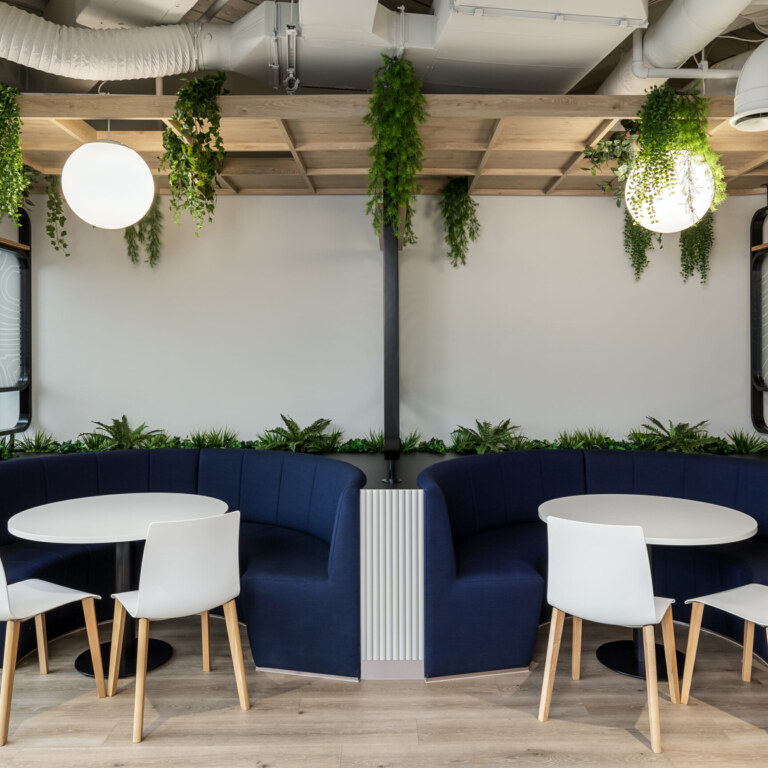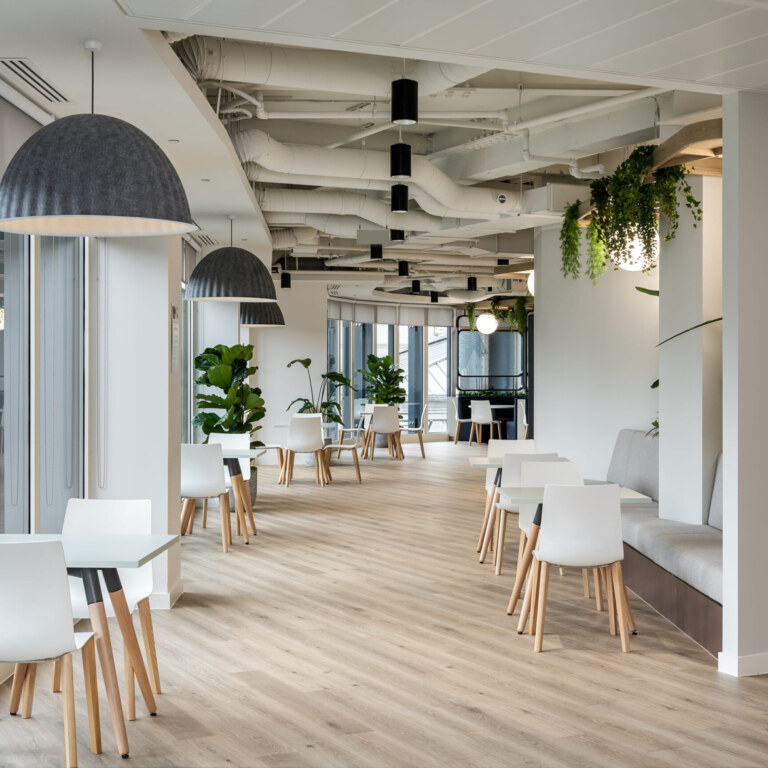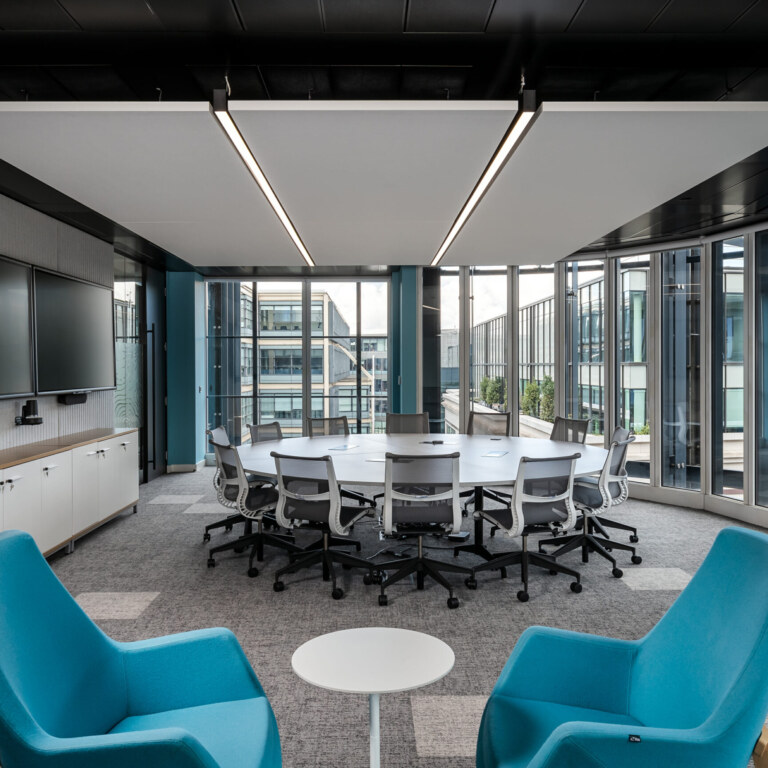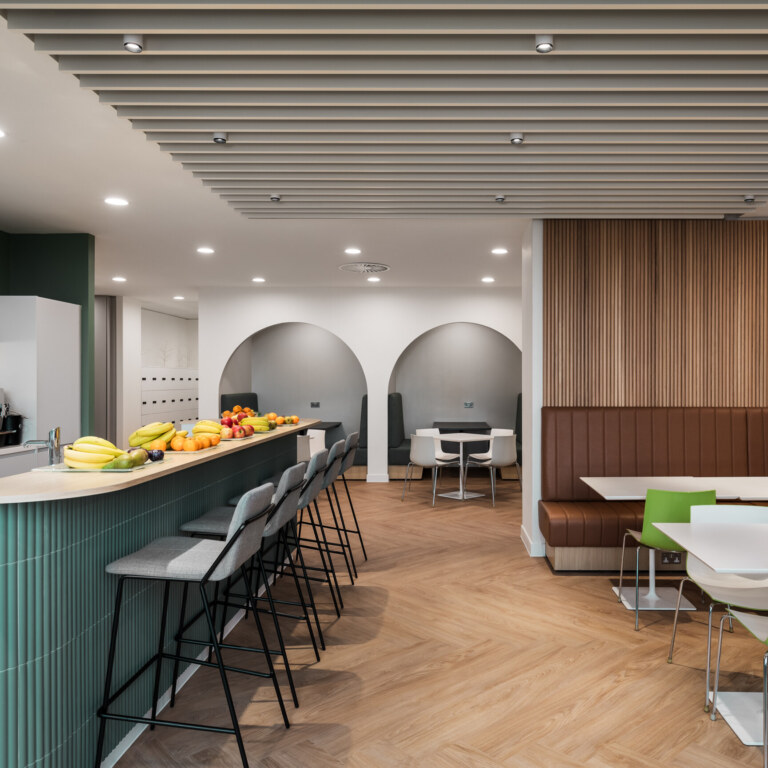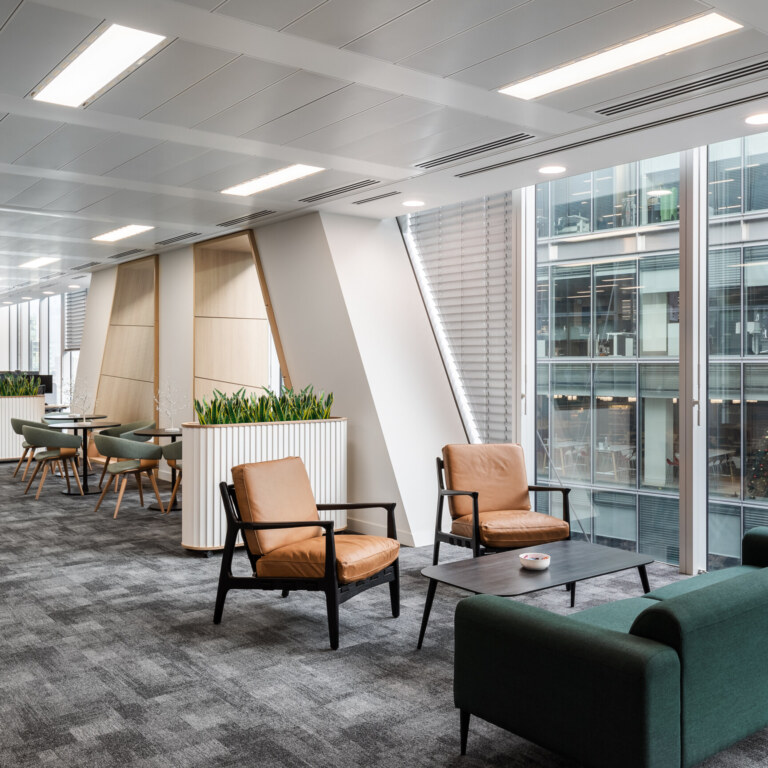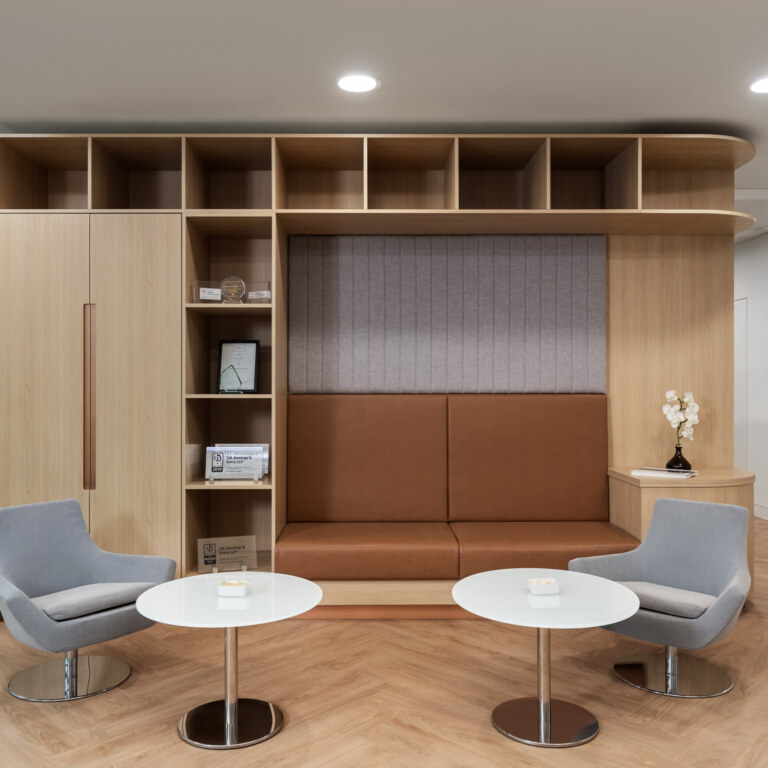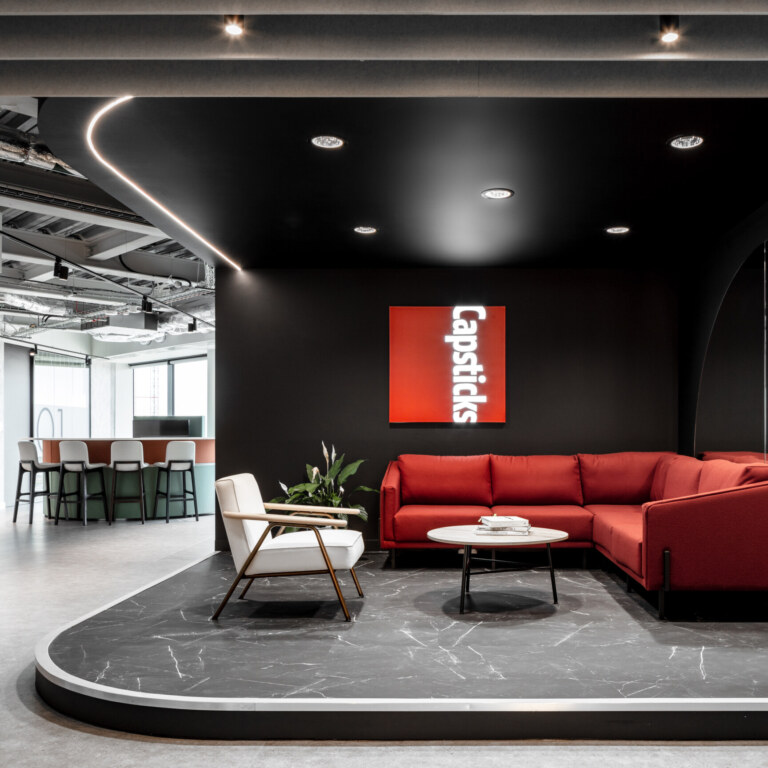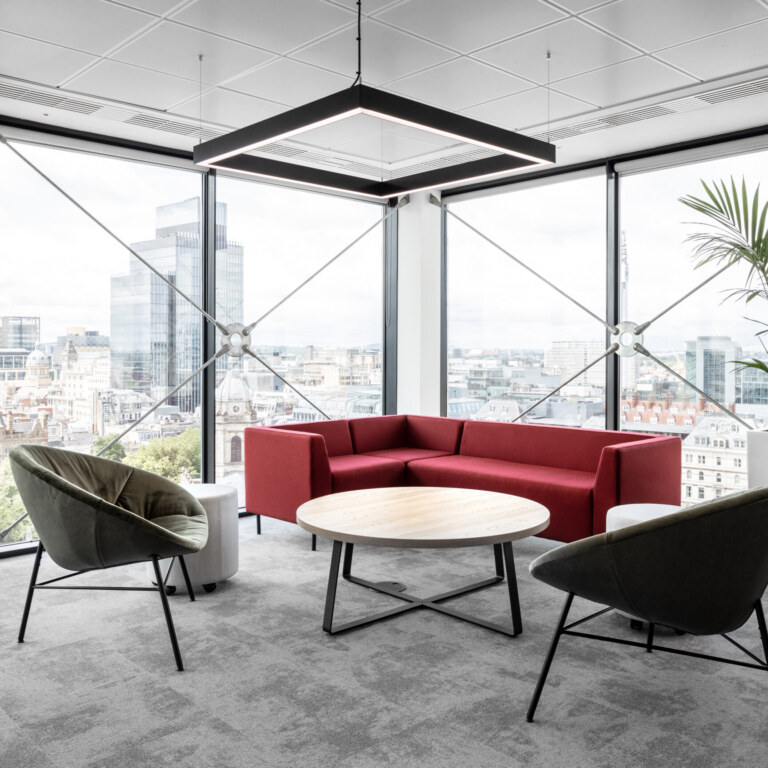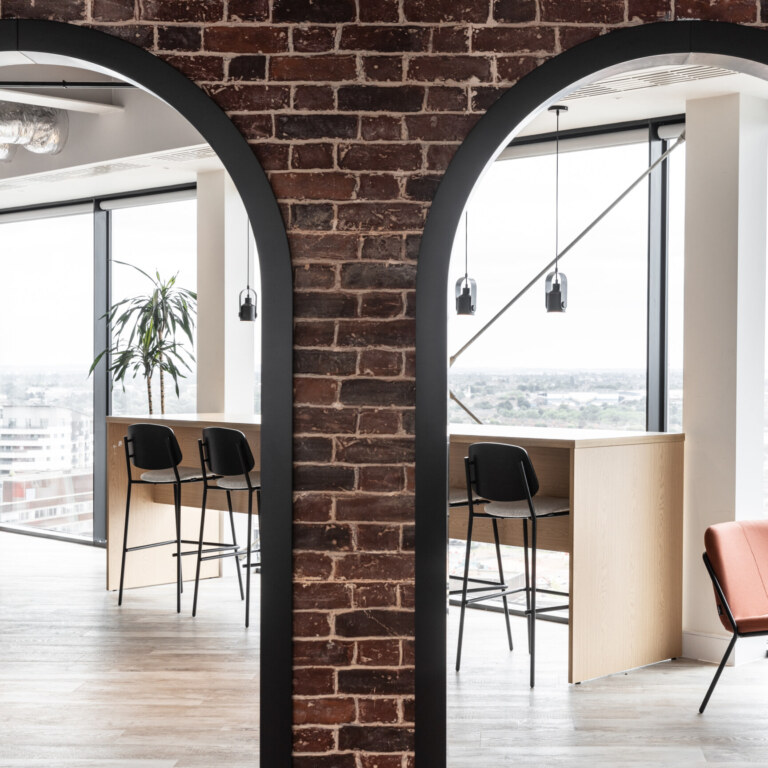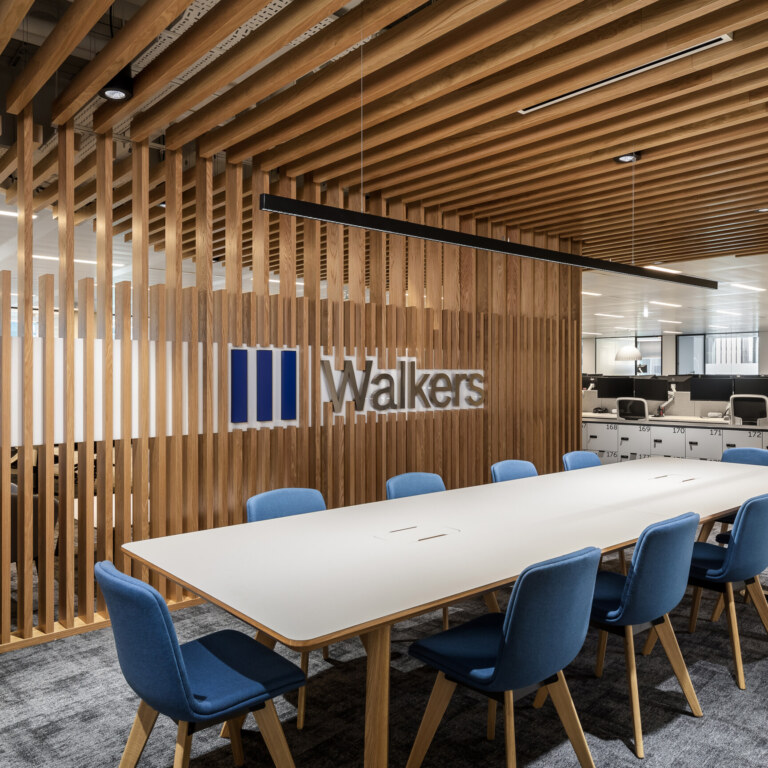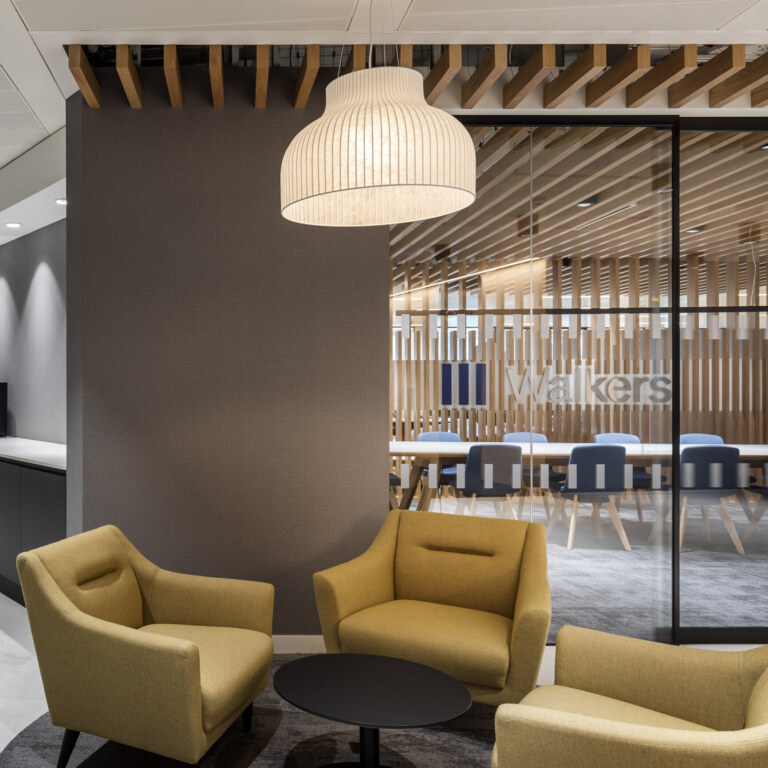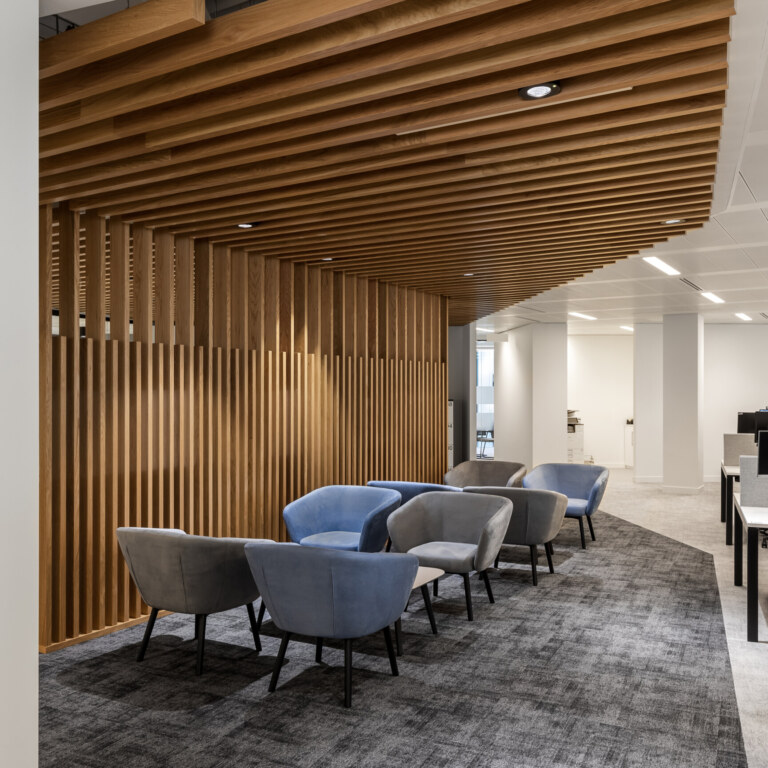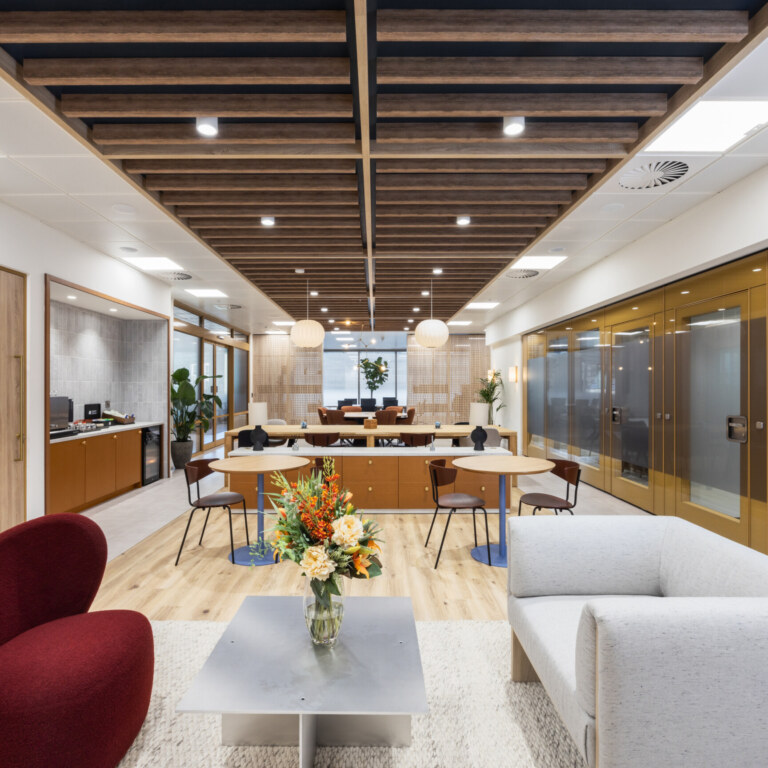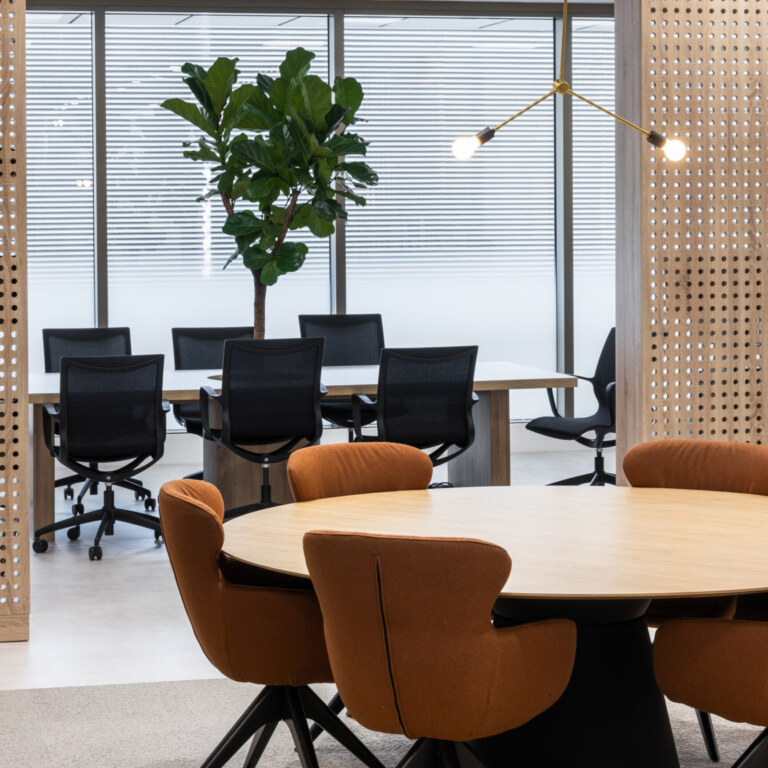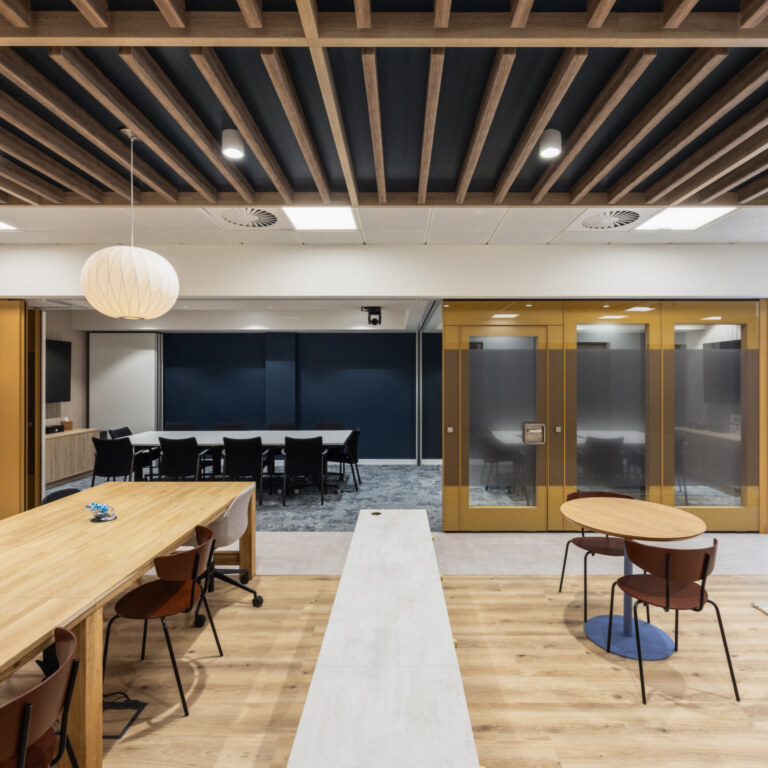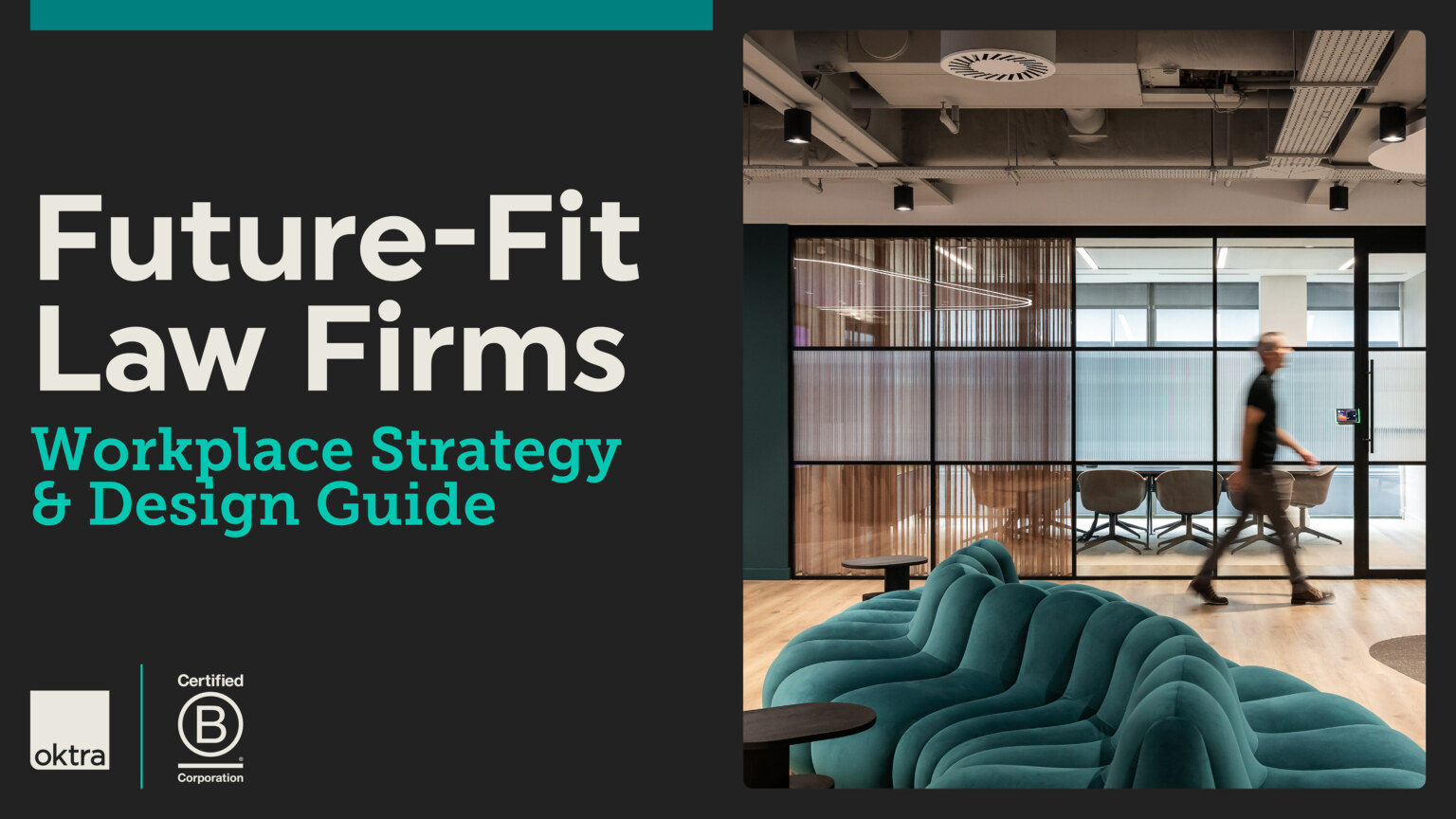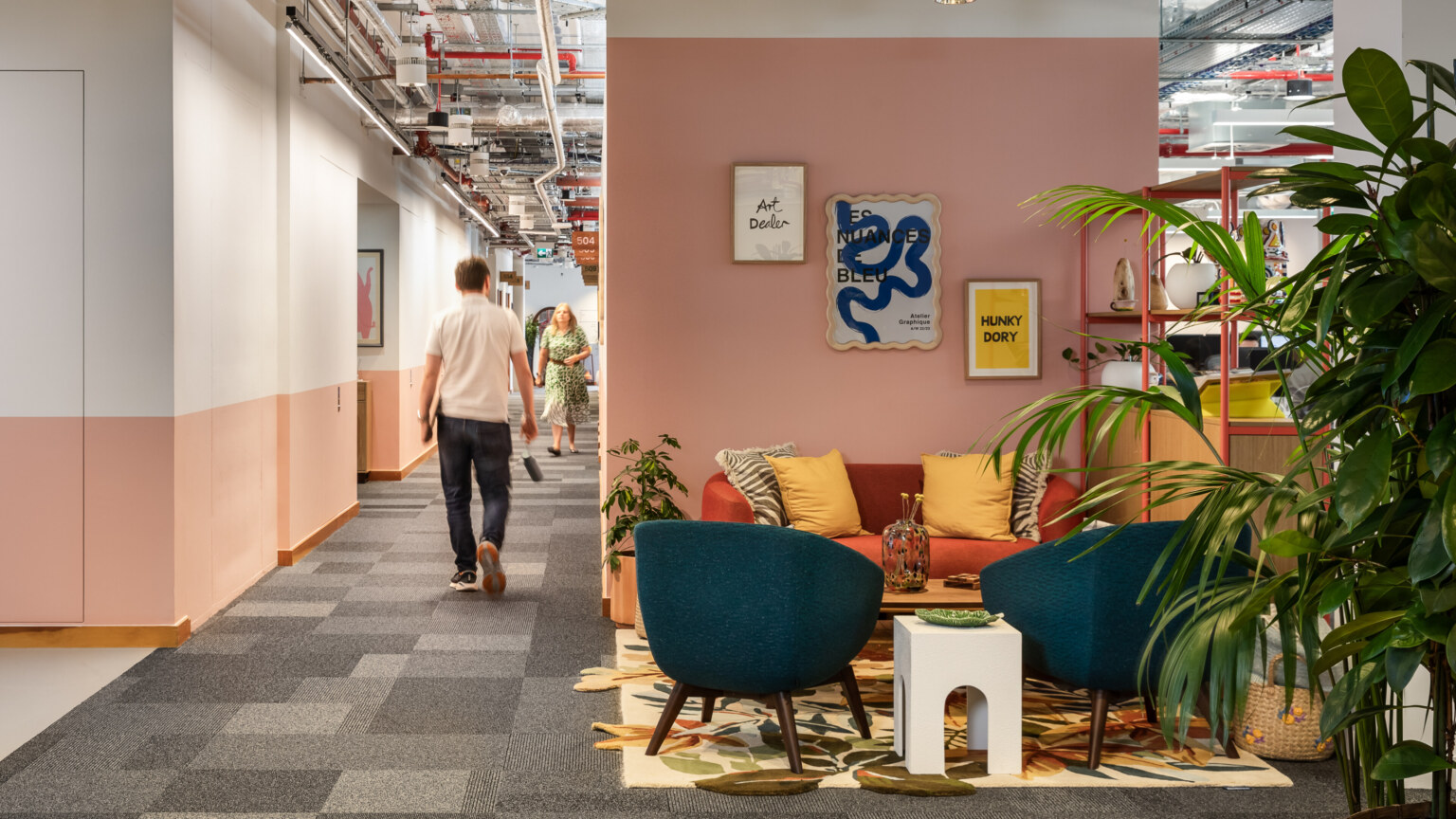-
The legal sector is undergoing a quiet revolution. Traditional chambers and mahogany-lined offices are giving way to hybrid, tech-enabled and client-centric environments that reflect a new way of working. As hybrid working becomes the norm, digitalisation accelerates and client expectations evolve, law firms are rethinking what their physical spaces should represent.
-
The modern legal office needs to do more than convey prestige and professionalism. It should support collaboration while maintaining confidentiality, foster culture across in-person and remote teams and create an experience that resonates with clients and staff alike.
This article explores how forward-thinking law firms are reimagining their workplaces for the future. From flexible layouts and acoustic zoning to technology integration and wellness-driven design, we’ll share key ideas that help modern legal practices adapt, attract talent and thrive in a rapidly changing profession.
-
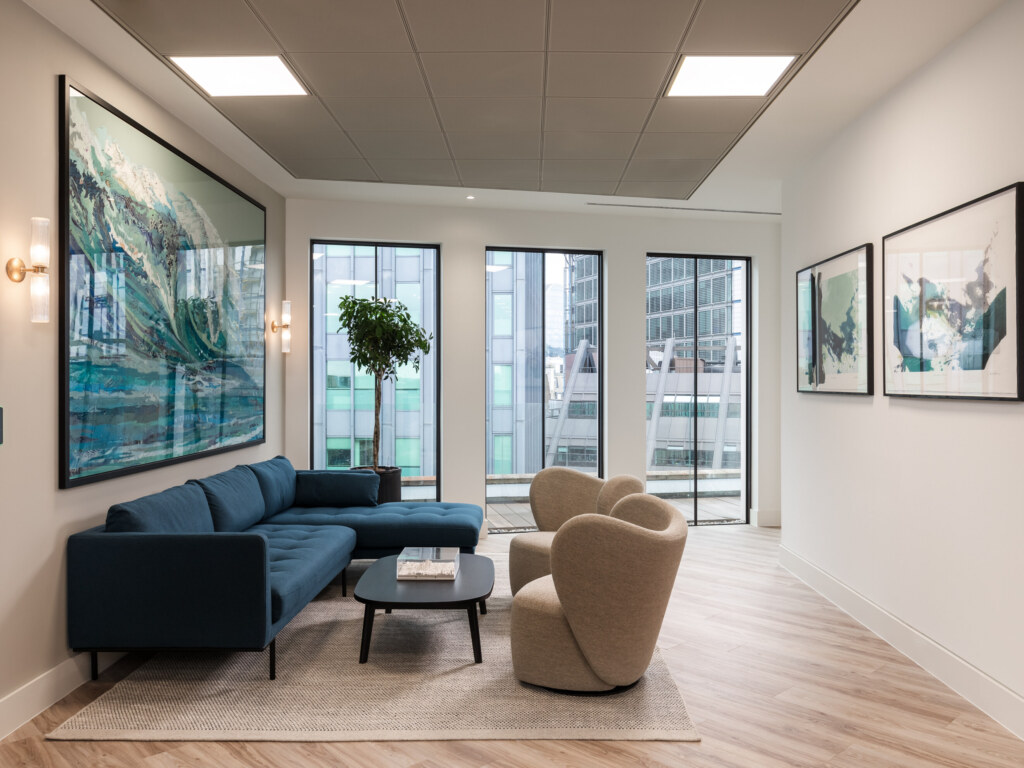
-
Adapting legal offices for hybrid and flexible work
The legal sector was once dominated by private, partner-led offices. Most legal teams are familiar with the typical long corridors of enclosed rooms, but hybrid working is changing that in terms of companies’ spatial priorities.
-
More law firms are moving towards more open and activity-based environments that encourage teamwork, mentorship and the informal exchange of ideas. All while providing secure, acoustically controlled spaces for sensitive discussions.
This evolution is being guided by data as much as design. Workplace consultancy insights, occupancy analytics and space-utilisation studies can help firms understand how their teams actually use the office. That includes where space can be reallocated for greater efficiency and impact, while also providing employees with more of the spaces that they like to use.
A prime example is Hogan Lovells’ London office. Its redesign addresses underutilised space, boosts internal collaboration and supports a shift toward a more relaxed workplace culture. Functional zoning and tech-forward design have allowed the firm to improve flexibility without compromising the privacy and discretion fundamental to the legal sector.
-
Designing for client experience and first impressions
Of course, flexibility and discretion aren’t the only considerations for legal office design. Given the nature of the sector, a firm’s office still needs to reflect a physical embodiment of trust and professionalism, and design plays a strategic role in shaping that experience.
-
Client areas are no longer just waiting rooms. They are key touchpoints for reinforcing brand identity, demonstrating credibility and setting the tone for every interaction. That’s why modern legal offices are increasingly borrowing from hospitality design principles, with lounges, reception areas and breakout spaces crafted to be welcoming and comfortable, yet professional — balancing openness with discretion.
At the same time, tech-enabled meeting suites and digital presentation tools support hybrid engagement. They ensure clients can connect seamlessly with legal teams, regardless of location.
A practical example of this approach is Gill Jennings & Every’s London office. The space has consolidated the firm from two floors to a single high-performing floorplate. Flexible neighbourhood desks, dedicated social and quiet zones and a reconfigured layout have created a more connected and efficient environment.
The redesign optimises real estate use and reduces overheads by eliminating underused areas. But it also aligns with how teams actually work, improving flow and strengthening the sense of community by uniting staff on one floor.
-
Prioritising wellness and comfort in the workplace
Workplace wellbeing used to be a nice-to-have perk. Nowadays, it’s a measure of performance. As well as focus, modern legal workplaces should be designed to support moments to recharge away from desks to ensure staff can perform at their best in a typically high-pressure environment.
-
Acoustic privacy, ergonomic furniture and control over lighting and temperature are fundamental. Incorporating natural light, biophilic elements and dedicated wellness spaces helps reduce stress and fatigue, while thoughtful spatial planning and sensory design can prevent burnout and improve day-to-day experience.
Capsticks’ Birmingham office does this well. Their flagship hub has raised welcome areas, arbitration rooms and flexible workstations designed for hybrid use. The modern law firm design elevates the firm’s regional presence, improves client hosting and reflects the evolving brand and working style.
Quiet focus zones and wellbeing amenities are integrated throughout. These adaptable environments support professional interactions while prioritising privacy, comfort and overall wellbeing.
-
Creating inclusive and diverse environments
Inclusive design ensures that everyone can access, navigate and thrive within the workplace. It’s a must-have for diverse and multigenerational legal teams. That’s why modern law firms are moving away from hierarchical layouts like corner offices. Instead, they favour more democratic, activity-based arrangements that support collaboration and flexibility.
-
Design considerations now extend beyond layout. Accommodating neurodiversity and varying working preferences means providing adjustable lighting, acoustic options and sensory zones. Accessibility and cultural inclusion are supported through careful spatial planning, furniture specification and wayfinding design, ensuring that all team members feel welcome and empowered.
Consider Walkers at The Scalpel. They transitioned from coworking into a private office with a design that incorporates transparent meeting spaces, secure private areas and social zones.
As well as establishing a prestigious brand presence, their office supports hybrid working and provides dedicated client-hosting spaces. By combining inclusivity with functionality, they’ve created a destination workplace that fosters cultural cohesion, protects confidentiality and enables growth in a landmark location.
-
Leveraging technology to enhance collaboration and efficiency
Technology has become the invisible infrastructure of high-performing legal offices, underpinning both productivity and client service.
Modern law firms support seamless collaboration across locations by integrating:
- Secure, high-performance networks
- Video conferencing tools
- Hybrid meeting capabilities
-
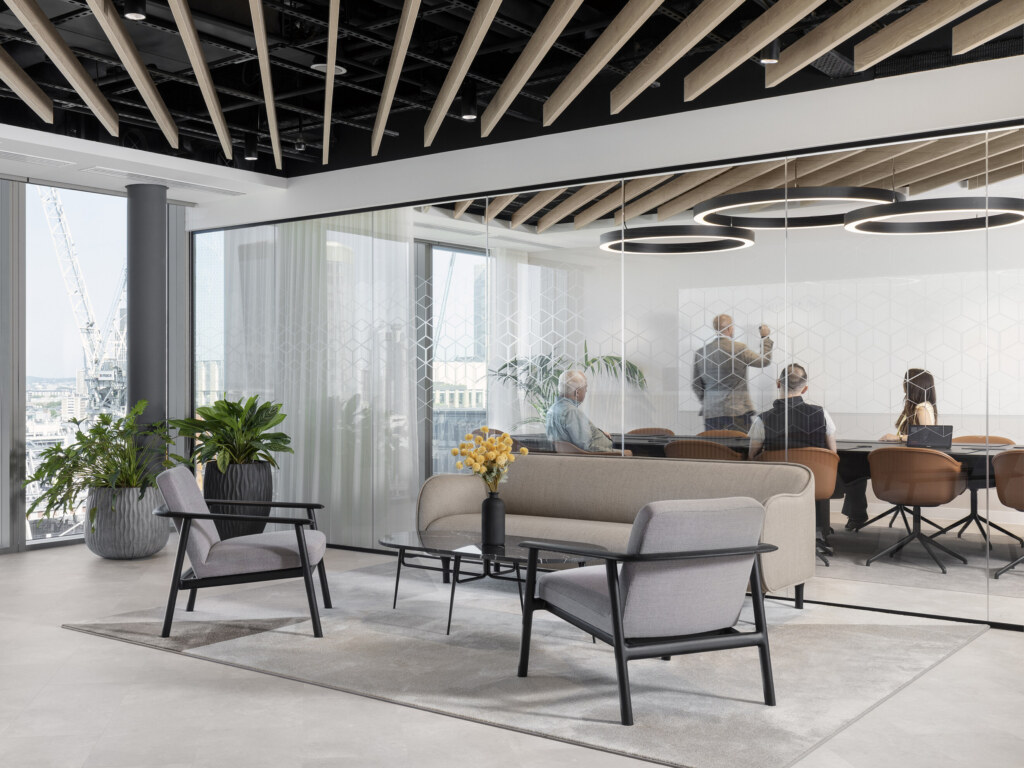
-
Smart technologies are increasingly used to optimise everyday operations, from room-booking systems and environmental controls to energy-efficient lighting and HVAC management. Not only do these tools improve efficiency, but they also enhance the user experience, allowing teams to focus on legal work rather than logistical challenges.
The rise of AI-assisted research and generative AI is also shaping workspace requirements. Offices now need to accommodate adaptable technology zones, secure data handling and flexible workstations that can evolve as new tools and workflows emerge. By future-proofing spaces for technological growth, law firms can remain agile and competitive in an increasingly digital legal landscape.
-
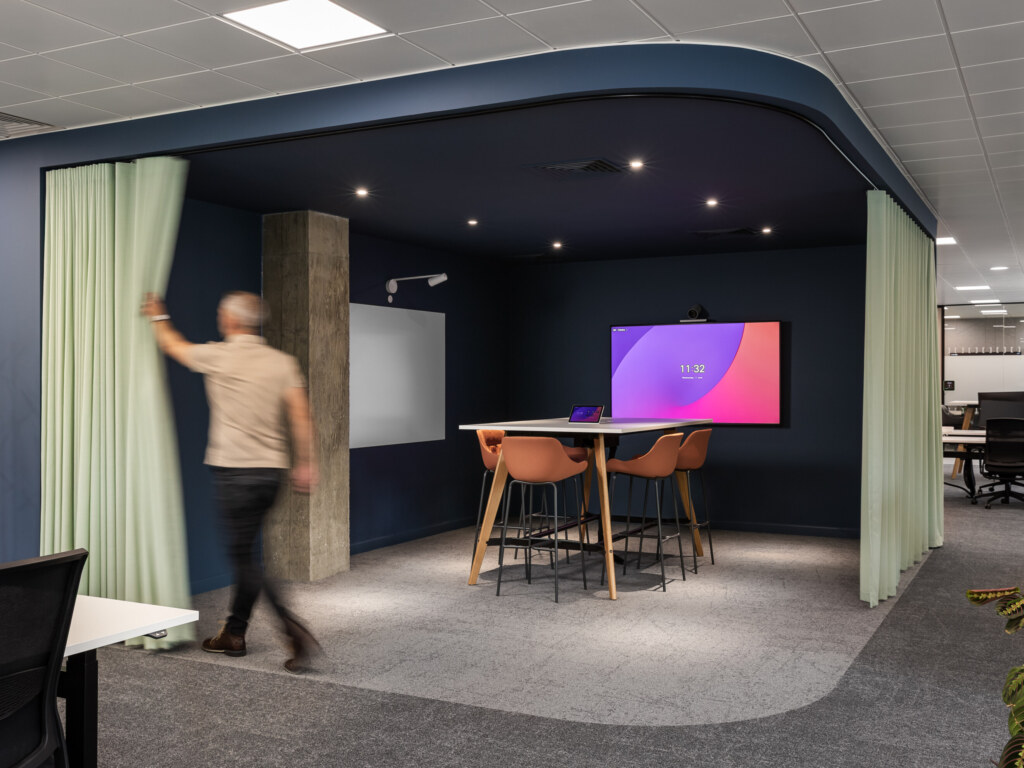
-
Optimising space utilisation and futureproofing design
The best legal office design anticipates change, reducing waste while enabling growth. Modern law firms are rebalancing private offices, collaboration hubs and shared amenities. Most importantly, they’re basing changes on occupancy data and space-utilisation insights, ensuring that every square foot contributes to efficiency and performance.
-
Modular and reconfigurable spaces allow offices to adapt to evolving team structures and new technology. Not to mention organisational changes such as mergers and acquisitions. Flexible layouts support both current operations and future growth, making offices resilient to shifting work patterns and business needs.
That was the case for Eversheds Sutherland’s Edinburgh office, as they relocated to a BREEAM Excellent-rated building. The design incorporates biophilic elements, acoustic treatments, sit-stand desks and flexible meeting rooms. All while integrating Edinburgh’s heritage to create a culturally connected, high-performance workspace.
The office supports hybrid working, improved wellbeing and collaboration. It also reinforces the firm’s brand through sustainable, locally resonant design. Above all, this modern office aligns environmental responsibility with efficiency and adaptability to enhance both employee engagement and client service.
-
Designing for performance, people and purpose
Modern legal office design is no longer just about prestige. There’s a broader focus on agility, inclusivity and wellbeing while maintaining gravitas. From spatial layout to technology integration and aesthetic choices, every design decision shapes culture, builds client trust and reinforces long-term business resilience.
Forward-thinking law firms are approaching office design strategically, creating workplaces that balance focus and collaboration, support staff wellbeing, embrace diversity and future-proof operations.
-
For firms seeking to explore these principles in more depth, our comprehensive design and strategy guide for legal offices can provide practical insights and case studies to inform the next generation of high-performing legal workplaces.
Download our guide -
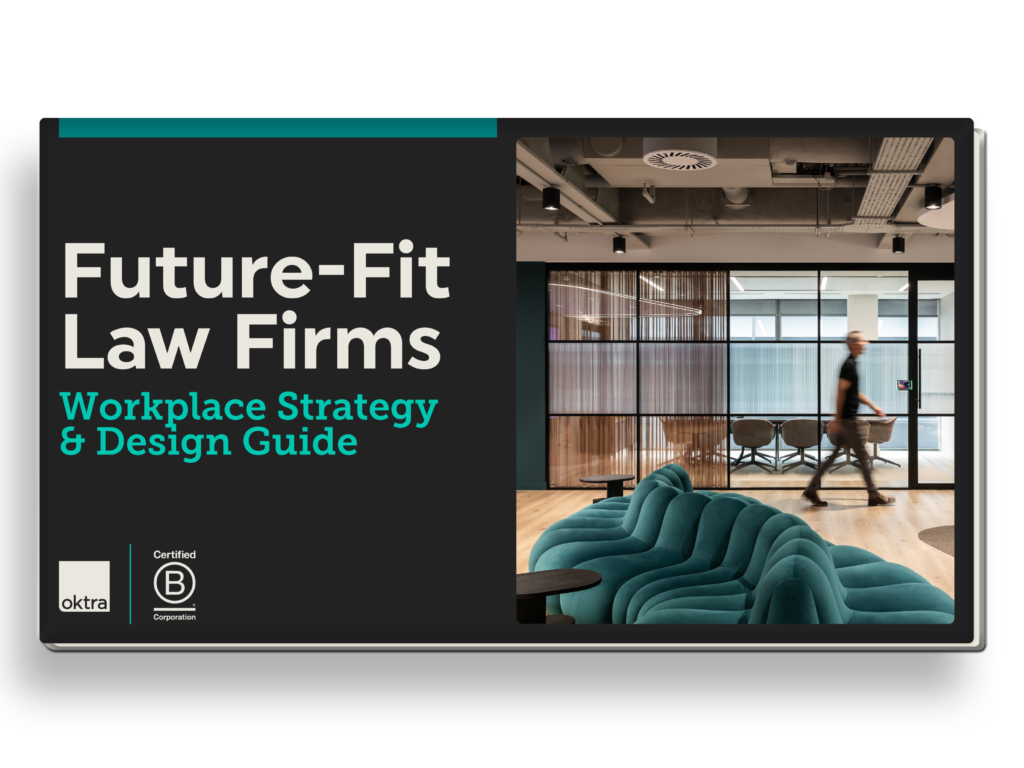
-
-
Why is office design important for law firms today?
Office design affects productivity, collaboration, client perception, staff wellbeing and talent retention. A well-designed office reflects your firm’s culture and values while supporting hybrid work, technology integration and future growth.
How can law firms balance confidentiality with collaborative spaces?
By creating a mix of private offices, acoustically treated focus zones and open, activity-based areas. Soundproof meeting rooms, phone booths and flexible layouts facilitate confidential work while encouraging teamwork and informal collaboration.
What role does technology play in modern legal offices?
Technology underpins efficiency, client engagement and hybrid collaboration. Secure networks, video conferencing, room-booking systems, smart environmental controls and AI tools all help law firms streamline workflows and future-proof spaces.
How can office design support staff wellbeing?
Through natural light, biophilic elements, quiet focus zones, ergonomic furniture, flexible workstations and wellness spaces. Thoughtful spatial planning and sensory design can reduce stress, prevent burnout and improve overall productivity.
How can legal offices create inclusive and accessible environments?
By de-hierarchising layouts, offering adjustable lighting and acoustic options, designing for neurodiversity and ensuring accessibility for all abilities. Inclusive design also considers cultural representation and multi-generational work preferences.
What trends are shaping legal office design?
Law firms are moving from heavy, formal finishes to lighter, sustainable materials. Modern offices blend heritage craftsmanship with contemporary design cues and include amenities like lounges, coffee bars and quiet libraries to enhance the workplace experience.
How can firms future-proof their office design?
Using modular and flexible layouts, monitoring space utilisation data, anticipating technology growth and planning for evolving team structures or mergers. Agile design ensures the office can adapt to changing work patterns and business needs.
How does office design impact client experience?
Whether it’s your reception or meeting rooms, client-facing areas can communicate professionalism, trust and brand identity. Thoughtful design enhances first impressions, supports hybrid client interactions and reinforces the firm’s credibility.
What metrics can I use to measure the success of office design?
Occupancy and space utilisation data, staff satisfaction surveys, client feedback and performance indicators such as collaboration frequency or meeting efficiency. Sustainability metrics and wellbeing measures can also track success.
-
Contact us
Speak to our workplace specialists
020 7553 9500
info@oktra.co.uk
-
Related content
-
Be the first to hear about new workplace trends when you join our mailing list.


